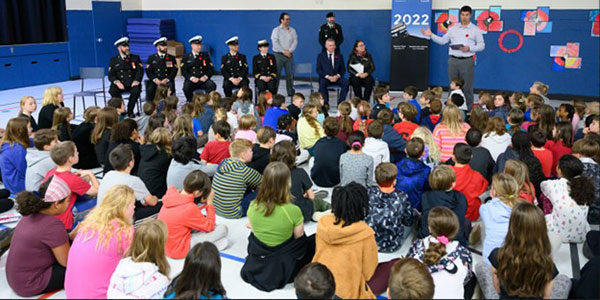Our role
We are storytellers
... who share Canada’s military history and the experiences of Canadians who bravely served and sacrificed on our behalf.
We are stewards
... of 15 war memorials in France, Belgium, the United Kingdom and Republic of Türkiye and, in Canada, of seven Books of Remembrance, two cemeteries, graves, grave markers and other commemorative resources.
We are guides
... to Canadians and visitors from around the world at Canada’s only two National Historic Sites outside of Canada: the Canadian National Vimy Memorial and the Beaumont-Hamel Newfoundland Memorial. Together, the sites welcome about 900,000 visitors each year. We offer opportunities to discover, learn, reflect and appreciate Canada’s military history.
We are partners
... with Veterans, communities, schools, national and international organizations, and colleagues across many levels of government in Canada and abroad. Together, we create innovative recognition and commemorative initiatives
Our commemorative mandate
On behalf of the people of Canada, Veterans Affairs Canada (VAC) is the lead department responsible for commemorating the country’s war dead since Confederation and for recognizing the achievements of former members of the Canadian Armed Forces (CAF). We fulfil this core responsibility through two distinct programs: the Canada Remembers Program and the Funeral and Burial Program.
The Canada Remembers Program keeps alive the achievements and sacrifices of those who served Canada in times of war and peace. We engage communities in remembering these achievements and sacrifices, and promote an understanding of their significance in Canadian life as we know it today. We ensure Canadians are aware of and value the contributions of all those who served. We tell the story of our military history and of Canadians who served in uniform. Communities across the country receive program funding to lead a wide range of commemorative initiatives. Veterans and those who died in service are publicly recognized through ceremonies and events, honours and awards, and the preservation and perpetual care of memorials, cemeteries and grave markers.
The Funeral and Burial Program provides financial assistance for the funeral, burial and grave marking expenses of qualified Veterans to recognize their service to Canada. VAC provides funding for Second World War and Korean War Veterans as well as CAF Veterans (Veterans with service post-Korean War) whose deaths were service-related or whose estates lack funds for a dignified funeral, burial and grave marking.
Our commitment
To commemorate
... the achievements of Canadians whose service and sacrifice while in uniform have inspired the character and values of our country.
To protect
... nationally significant cultural resources commemorating Canada’s military heritage to ensure they are preserved for future generations.
To present
... our national historic sites and military history to help Canadians experience, understand and appreciate how the courage, determination and ingenuity of those who served has shaped our nation.
Changing demographic landscape
The Canadian Veteran population is evolving and VAC’s December 2021 Facts and Figures reportFootnote 1 estimates there are 617,800 Veterans in Canada, about 96% of whom are CAF Veterans with an average age of 59.
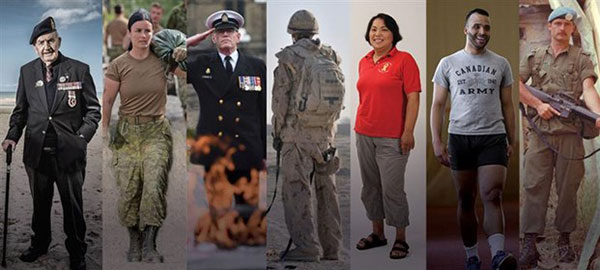
By comparison, the average age for War Service Veterans (who served in the Second World War and/or the Korean War) is 94. By 2026, one third of Veterans with service since 1954 will be older than age 70.Footnote 2
Not everyone who served Canada sees themselves as a Veteran, nor do they necessarily identify with the idea of commemoration. Many younger individuals who served in the CAF more recently, those who did not serve for very long, and some who were in the Primary Reserve, often do not see themselves as Veterans despite the fact that they are indeed Veterans. This may be attributed to the social perception that people have of what a Veteran is (i.e., a ‘traditional’ Veteran of the World Wars or the Korean War), rather than as defined by VAC, which considers ‘any former member of the CAF who releases with an honourable discharge and who successfully underwent basic training’ to be a Veteran.Footnote 3
Canada’s diverse population is reflected not only in race and ethnicity, but also in sex, gender, language, religion, age, disability, geography, culture, income, sexual orientation, and educationFootnote 4. Approximately one million people in Canada (or 4% of Canada’s population) belong to the 2SLGBTQI+ community, with bisexual women making up the largest portion of this group.Footnote 5 More than 450 ethnic and cultural origins, 200 places of birth, 100 religions and 450 languages were reported in the 2021 census.Footnote 6 Thousands of people immigrate to Canada each year. The 2021 census found that just under 6.4 million people born in Canada had at least one foreign-born parent in 2021, representing 17.6% of the total Canadian population.Footnote 7 Some immigrants may have limited or no connection to Canada’s military history. Recent user testing of our website shows new Canadians would like to learn more about the topic. Given Canada’s diversity, we must adapt and target our programming to reach more segments of the Canadian population in a way that is relevant to them.
Canadian youth form an important population for our programming – and that population is changing. According to Statistics Canada’s, A portrait of Canadian youth,Footnote 8 today’s youth are unlike any previous generation. They are more diverse, digitally connected, socially engaged and educated. The report emphasizes an important consideration for us. Today's youth will become Canada's future parents, prime age workers and seniors. Forty percent of Canadian youth are first or second generation immigrants and many do not have a familial connection to Canadian Veterans. We can develop their interest in commemoration and foster a lifetime appreciation for those who served by highlighting Canada’s contributions to international peace, security and humanitarian efforts in different regions of the world.
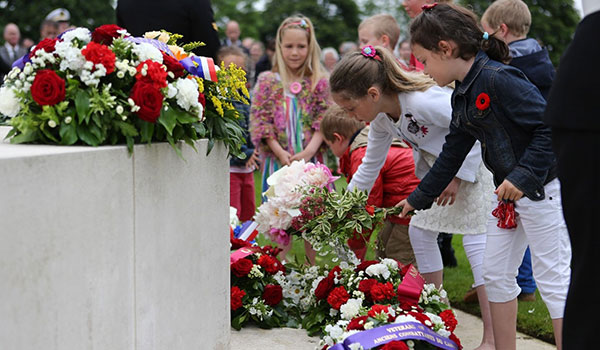
Digital technology is changing our economy and our society. How we access information, work and connect with each other is very dynamic. In 2021, 88.1% of Canadians owned smart phones – broken down by age group, as follows: 97.9% aged 15-24 year-old, 97.1% aged 25-44 year-old, 87% aged 45-64 years-old, and 60.4% aged 65 years and older.Footnote 9 Facing these changes, we are modernizing our approach and processes to support commemoration and recognition, and to explore innovative ways to design and deliver our initiatives. Doing so will help meet the evolving needs and expectations of Canadians, especially youth.
Reconciliation between Indigenous peoples and the Government of Canada is a priority and VAC’s commemorative programming includes an Indigenous commemorative approach. “There is a higher share of First Nations people, Métis and Inuit in Canada’s military and Veteran population than among the total population aged 17 and over.”Footnote 10
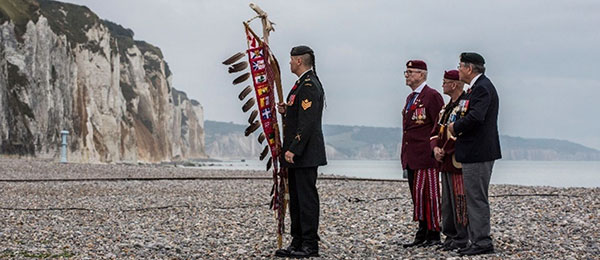
VAC’s Commemorative Partnership Program provides greater support to Indigenous Communities, including remote and northern communities, to honour all those who served. Culturally appropriate commemorative initiatives must resonate with Indigenous Veterans, through increased inclusion of Indigenous Veterans, survivors and their communities in commemorative activities in Canada and internationally.
We are learning
Canadians, Veterans and educators are helping us plan our way forward. Across the board, we learned that Canadians want to hear Veterans’ personal stories, experiences and achievements.
A November 2019 Angus Reid Institute study found:
- The vast majority of Canadians (80%) say that Canada should do more to honour Veterans. Four-in-five Canadians (79%) say that they feel proud when they think about this nation’s armed forces.
- More than 60% of Canadians have had conversations with someone who serves, or who has served recently, about their experience.Footnote 11
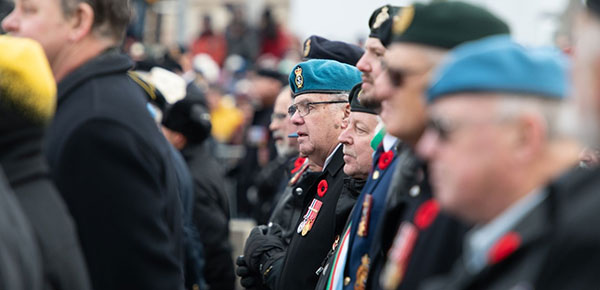
A May 2020 IPSOS study found:
- 75% of the Canadians surveyed agree that it is important to hold ceremonies in remembrance of the Second World War.
- 48% of the Canadians surveyed report that some of their relatives or ancestors served in the armed forces during the Second World War.Footnote 12
The Minister of Veterans Affairs’ Commemoration Advisory GroupFootnote 13 wants us to recognize Veterans’ service in the different regions of the world, and here at home, across all eras of our military history. They want us to tell the story of the diversity of the different jobs and roles our Veterans filled in the army, navy and air force. The advisory group remains in support of commemorating the First World War and prefer that we maintain the five-year cycle of commemorating the Second World War and Korean War milestones. They want us to renew our focus on youth and bring commemoration to the wider Canadian public with events in Canada being more prominent in our programming.
Between May and July of 2021, VAC invited all Canadians including Veterans, CAF members, Royal Canadian Mounted Police (RCMP), other persons involved in international peace support operations, their families, Veterans organizations, and the general public to share their thoughts on the future of remembrance in Canada. Over 1,800 Canadians responded to our “Let’s Talk Veterans” consultation and provided their ideas on how we can evolve our remembrance programming.Footnote 14 The top three themes from the consultations on the future of remembrance were:
- Highlight diversity and shared experience in service in commemorative efforts.
- Expand the scope of remembrance to emphasize modern missions and service.
- Educate Canadians, especially youth in schools, through personal and compelling Veteran stories and interactive digital experiences.
What Canadians tell us…
An August 2019 Government of Canada-led public opinion poll measured Canadians’ awareness and interest in a variety of approaches to remembrance. For example, 88% of Canadians said that Canada’s military history should be taught in schools. In response to the question “If you wanted to learn more about Canada’s military history and those who served, how would you prefer to obtain the information?”
- 72% would prefer videos about Canada’s military accomplishments and sacrifices.
- 65% would read articles or booklets about Canada’s military accomplishments and sacrifices.
- 61% would prefer virtual tours of sites where Canada’s military served.
- 54% would use an interactive online tool, such as an app.
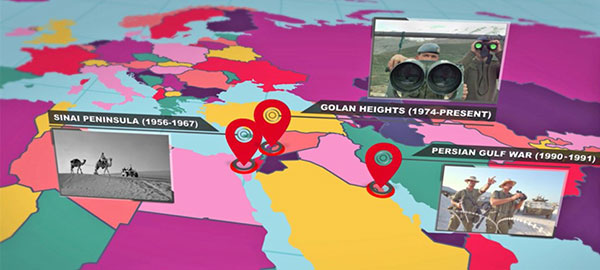
We consulted over 750 Canadian teachers and other educators in October 2020. We asked them to identify their needs and interests related to remembrance programming.Footnote 15 Educators seek content about modern conflicts and younger Veterans. Given the increase of newcomers to Canada, more youth are coming from areas where CAF has served and some may have family members or know Veterans who served in areas such as Afghanistan. Providing additional resources and content on more recent operations will help young Canadians make even stronger connections with the Veterans we serve. Additionally, every fall we consult educators who ordered our Veterans’ Week learning resources. Educators agree or strongly agree (99%) that VAC learning resources contribute to students’ understanding and appreciation of remembrance.
What educators tell us…
- Most educators prefer printed materials (87.5%) and hands-on learning activities (86.3%), including digital products (77.3%).
- The most requested materials were topics related to helping Canadians after natural disasters (78.3%), peacekeeping and peace support efforts with a focus on different regions of the world each year (77.6%).
- Learning materials must be inclusive and mindful of the diversity of students across the country (e.g., Indigenous, immigrant, 2SLGBTQI+, racialized, other minorities and students affected by trauma).
The bottom line
The Canadian population is evolving and diverse. There are more and more new citizens with connections to Canada’s military contribution to peace and security in the world. Building on the success of our current practices, we will expand and adapt our programming to engage more Canadians in remembrance.
